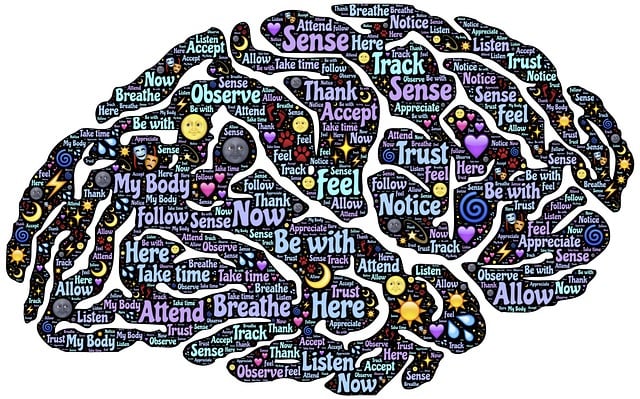Risk Assessment in Therapy for Adolescent Teens with PTSD: Mental health professionals play a vital role in managing risks associated with treating teen PTSD, focusing on personalized care. By evaluating trauma histories and current stressors, they identify vulnerabilities and implement strategies like crisis intervention and resilience-building programs. A supportive environment encourages open communication, reduces stigma, and promotes positive coping mechanisms. Evidence-based practices, including structured protocols and stress management techniques, enhance therapeutic outcomes while tailored care ensures unique needs are addressed for effective PTSD support in adolescents. Continuous monitoring and flexible approaches are key in long-term care settings.
Mental health professionals are constantly navigating complex ethical territories, especially when treating adolescent teens with post-traumatic stress disorder (PTSD). This article provides a comprehensive guide to risk assessment in this context. From understanding foundational principles to identifying unique risks and vulnerabilities, we explore evidence-based strategies for mitigating these risks during therapy. Additionally, we emphasize the importance of continuous monitoring and adaptation in ensuring long-term safety for this vulnerable population.
- Understanding Risk Assessment in Mental Health: A Foundation for Safe Practice
- Identifying Risks Specific to Adolescent Teens with Post-Traumatic Stress Disorder (PTSD)
- Assessing Vulnerability and Protective Factors: A Comprehensive Approach
- Implementing Evidence-Based Strategies for Mitigating Risks in Therapy
- Continuous Monitoring and Adaptation: Ensuring Safety in Long-Term Care
Understanding Risk Assessment in Mental Health: A Foundation for Safe Practice

Risk assessment is a fundamental aspect of mental health practice, providing a structured approach to identifying and managing potential dangers within therapeutic settings. For professionals working with adolescents experiencing post-traumatic stress disorder (PTSD), this process serves as a cornerstone for safe and effective therapy. By thoroughly evaluating clients’ historical trauma, current stressors, and vulnerability factors, therapists can anticipate and mitigate risks associated with reliving traumatic memories or triggering severe anxiety symptoms during treatment.
Understanding risk assessment allows mental health professionals to personalize their approach, ensuring the best possible care for each teen. This involves not only identifying risks but also developing comprehensive strategies for crisis intervention guidance, particularly in cases of acute PTSD exacerbation or co-occurring conditions like anxiety relief. Through ongoing evaluation and adaptation, therapists contribute to stigma reduction efforts by fostering a supportive environment where adolescents feel empowered to navigate their mental illness with confidence and resilience.
Identifying Risks Specific to Adolescent Teens with Post-Traumatic Stress Disorder (PTSD)

Adolescent teens with Post-Traumatic Stress Disorder (PTSD) face unique risks within the therapeutic setting. This population often presents with complex trauma histories, including experiences related to sexual abuse, domestic violence, or military service. Mental health professionals must be vigilant in identifying and addressing these specific risk factors, as they can significantly impact a teen’s ability to engage in therapy and their overall treatment outcomes.
Building resilience is crucial when working with this vulnerable group. Through tailored mental health education programs design, therapists can empower teens to develop coping strategies and positive thinking patterns. Fostering an environment that promotes open communication and encourages the expression of emotions safely can help mitigate the potential risks associated with PTSD. Additionally, professionals should be mindful of the teen’s support system, ensuring strong connections with family or trusted peers to enhance their overall resilience.
Assessing Vulnerability and Protective Factors: A Comprehensive Approach

When conducting a risk assessment for mental health professionals working with adolescent teens, it’s crucial to adopt a comprehensive approach that considers both vulnerability and protective factors. Vulnerability assessments should delve into the client’s history of trauma, including experiences of post-traumatic stress disorder (PTSD), as well as their current mental wellness state and coping mechanisms. By understanding these aspects, therapists can identify potential risks and triggers that may escalate during therapy sessions.
Protective factors, equally important, involve evaluating the teen’s support system, access to crisis intervention guidance, and prior successful coping strategies. These elements play a significant role in mitigating risks and fostering positive outcomes in therapy. Mental health professionals should be adept at recognizing and leveraging protective factors, ensuring adolescents receive holistic care that addresses both their vulnerabilities and strengths.
Implementing Evidence-Based Strategies for Mitigating Risks in Therapy

Implementing evidence-based strategies is paramount for mental health professionals to mitigate risks within therapy settings, especially when treating adolescent teens with post-traumatic stress disorder (PTSD). By adopting structured protocols and therapeutic approaches backed by robust research, practitioners can enhance their ability to support vulnerable clients effectively. One such strategy is incorporating specialized trauma-focused interventions that have proven successful in managing PTSD symptoms. These techniques enable therapists to create a safe and supportive environment, fostering open communication and encouraging teens to process traumatic memories in a controlled manner.
Additionally, integrating stress management techniques into therapy can significantly reduce risks associated with exposure to traumatic content. Teaching adolescents coping mechanisms, mindfulness practices, and resilience-building exercises empowers them to navigate distressing emotions and maintain mental wellness. Tailoring these strategies to the unique needs of each teen ensures personalized care, enhancing the overall effectiveness of trauma support services provided.
Continuous Monitoring and Adaptation: Ensuring Safety in Long-Term Care

In long-term care settings, continuous monitoring and adaptation are essential components of risk assessment for mental health professionals working with adolescent teens suffering from post-traumatic stress disorder (PTSD). This involves ongoing evaluation of each patient’s emotional healing processes, incorporating self-care practices tailored to their unique needs. By regularly assessing and adjusting treatment plans, therapists can ensure the safety and well-being of teens in their care, fostering a dynamic environment that supports their mental wellness journey.
Regular check-ins and flexible therapeutic approaches enable professionals to guide adolescents through emotional healing processes, offering strategies like journaling exercises for self-reflection and stress management. This proactive monitoring not only prevents potential risks but also empowers teens with tools to maintain their mental wellness over time.
Mental health professionals play a vital role in providing therapy for adolescent teens with post-traumatic stress disorder (PTSD), but they must also navigate and mitigate associated risks. By understanding risk assessment as a foundational component of safe practice, identifying specific risks, assessing vulnerability and protective factors comprehensively, implementing evidence-based strategies, and continuously monitoring and adapting care plans, professionals can ensure the safety and well-being of their young clients in the long term, enhancing the effectiveness of treatment for PTSD.











